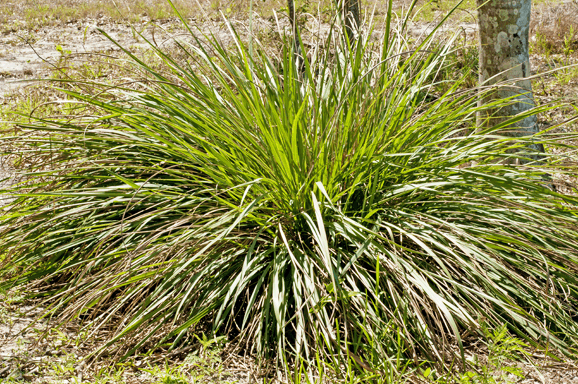Grasses (Family Poaceae) in the Christopher B. Smith Preserve
 Family Poaceae Characteristics: Members of this plant family are monocotyledonous, flowering plants. A monocot seed has only one cotyledon (seed leaf). Grasses have hollow stems, plugged at intervals with solid nodes that bear leaves. Leaves have veins that are parallel. Grass flowers are usually arranged in spikelets; each spikelet has one or more florets (small flowers).
Family Poaceae Characteristics: Members of this plant family are monocotyledonous, flowering plants. A monocot seed has only one cotyledon (seed leaf). Grasses have hollow stems, plugged at intervals with solid nodes that bear leaves. Leaves have veins that are parallel. Grass flowers are usually arranged in spikelets; each spikelet has one or more florets (small flowers).
Interactions in the Smith Preserve: Within the Smith Preserve, grasses are extremely important. Their root system holds particles of sand and other sediments, preventing erosion. The leaves and other plant tissues provide food and energy for a variety of organisms, and grasses serve as shelter for birds, lizards, snakes, rabbits, insects and other creatures. There are many different species of grasses in the Preserve. The 16 species of grasses that have been identified in the Preserve are listed below. Click on the species name to learn more about each one.
Species Name |
Common Name |
Bushy Bluestem |
|
Broomsedge Bluestem |
|
Wiregrass |
|
Slender Sandsbur |
|
Bermudagrass |
|
Egyptian Grass / Durban Crowfootgrass |
|
Elliott's Lovegrass |
|
Purple Lovegrass |
|
Centipedegrass |
|
Muhly Grass |
|
Torpedo Grass |
|
Thin Paspalum Grass |
|
Natal Grass |
|
Bristlegrass / Foxtail |
|
Sand Cordgrass / Bunch Grass |
|
Fakahatchee Grass / Eastern Gamagrass |
